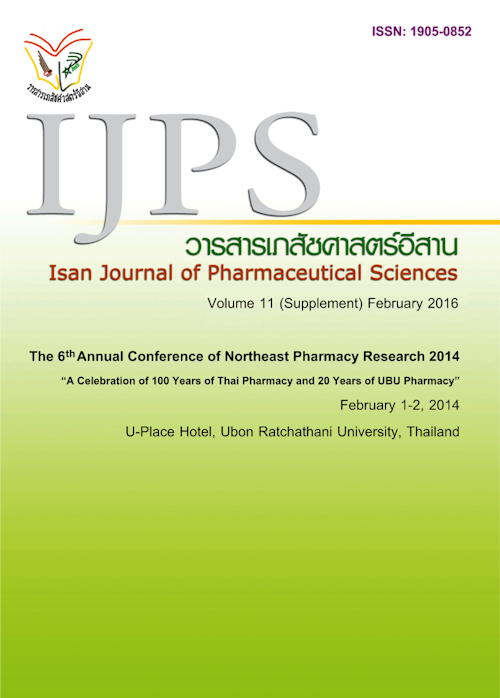Inhibitory Potential of Miroestrol on CYP1A Protein in Mouse Liver Microsomes and in silico
Main Article Content
Abstract
Introduction: Pueraria mirifica (PM) is a Thai traditional medicinal plant for rejuvenation and estrogen replacement therapy in menopausal women. Miroestrol is a potent phytoestrogen isolated form the bark of PM tuberous roots CYP1A1 and CYP1A2 proteins are the members of hepatic cytochromeP450 (CYP) enzymes to activate a procarcinogen, in which ethoxyresorufinO-deethylase (EROD) and methoxyresorufinO-demethylase (MROD) activities are the specific markers for CYP1A1 and CYP1A2, respectively. Materials and Methods: The effects of miroestrol on EROD and MROD activities were examined in mouse hepatic microsomes, compared to a typical CYP1A1/2 inducer and substrate, beta-napthoflavone (BNF). The bindings of miroestrol to either CYP1A1 or CYP1A2 enzymes were analyzed using molecular docking with homology modeling technique. Results: The median inhibitory concentration (IC50) of miroestrol on EROD activity corresponded to thatof MROD, namely BNF > miroestrol. Interestingly, the binding pose energy of these compounds to CYP1A1 and CYP1A2 proteins were consistent to those of inhibitory effects on EROD and MROD activities. The observations suggested for the first time that miroestrol possessed inhibitory potential on CYP1A1 and CYP1A2 via EROD and MROD activities, respectively. Conclusion: The observations suggested for the first time that miroestrol possessed inhibitory potential on CYP1A1 and CYP1A2 via EROD and MROD activities, respectively.
Article Details
In the case that some parts are used by others The author must Confirm that obtaining permission to use some of the original authors. And must attach evidence That the permission has been included


